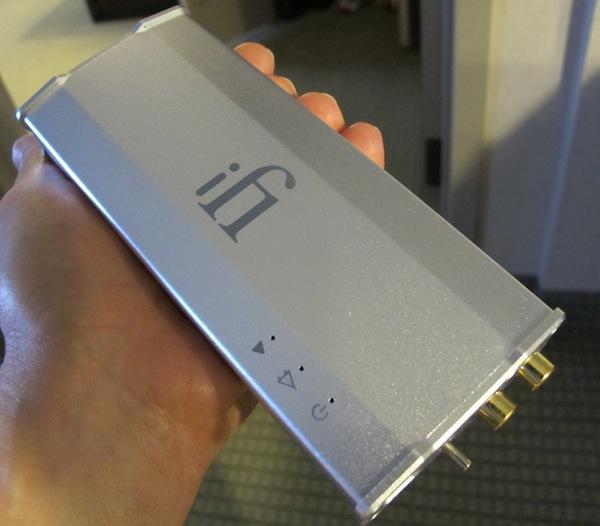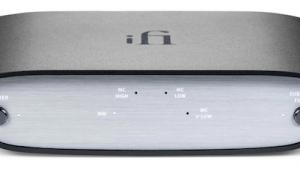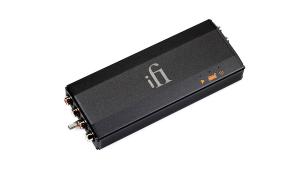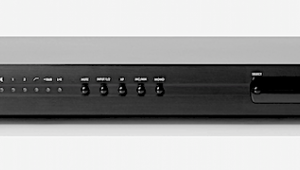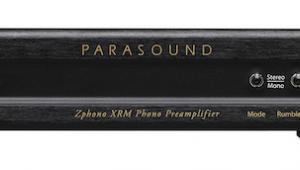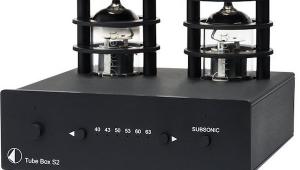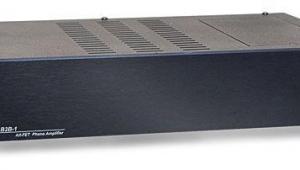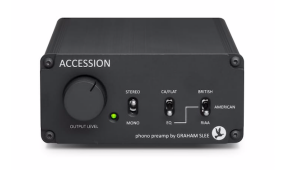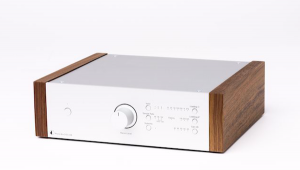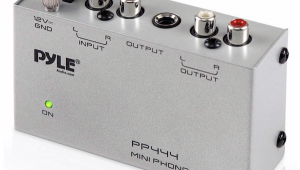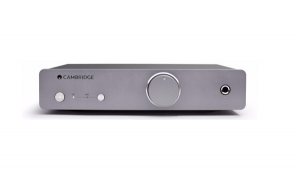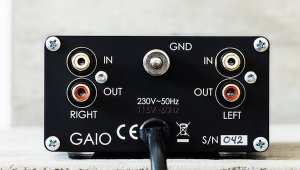What's a $8500 Cartridge Doing In a Place Like This? The $399 ifi iPhono Phono Preamplifier
The tiny tot's feature set and specs are truly remarkable. Via a plethora of tiny dip switches located on its underside the iPhono offers 40dB and 46dB gain for MM cartridges via its MM input and 60dB and 66dB gain via its MC input. Another set of dip switches lets you adjust capacitive loading in MM from 100pF-500pF. In MC you can adjust resistive loading from 22ohms to 47kohms (22, 33, 75, 100, 250, 330, 1K and 47K).
In addition you have a choice of 3 basic EQ curves: RIAA, Columbia and Decca. The instructions say the Columbia and Decca curves are for "pre 1980s records" while the RIAA is for "all records issued after 1980s and some after 1950s." The Decca curve is also for "most" London, DGG, Archiv, EMI, Argo, NAB etc. Also the iPhono offers four different RIAA curves: standard as well as eRIAA, IEC and eRIAA+IEC. More about that later on. Power is via an outboard "wall-wart" type power supply.
I ran various cartridges into the iPhono and stopped with the Ortofon Anna a .2mV output that costs $8499. A ridiculous mismatch? In some ways yes, but the iPhono managed the low output surprisingly well, producing sufficient gain with just a slight bit of "whooshing" sound audible with an ear at the speaker with the cueing lever up at healthy volume.
Obviously the iPhono is more than capable of providing sufficient gain for all but the ultra-low MCs, of which there are fewer all the time.
How did it sound? The iPhono had excellent "rhythm'n'pacing", with surprisingly taut and well-controlled bass and a clean, dry midrange and a precise, though somewhat clinical top end. It didn't sizzle or produce offensive high frequency nasties though. In other words, what it did was all good and what it didn't do, you won't miss unless you compare it to something else costing well more. Its sins were of omission. Most significant in my opinion was the iPhono's excellent timing and freedom from transient "smear."
The iPhono's greatest fault was a lack of midrange bloom. It's attack was clean and fast, the sustain was somewhat lacking and decay was pretty stingy. The result was a limited ability to convey subtle instrumental textures. The sound was more precise in delineating the physical outlines than in getting into the dense inner contours. The iPhono didn't plumb the depths but how many are going to use it with speakers capable of below 30Hz response? The bass that was there, however, was very clean, precise and well-controlled. Look, it costs $399!!!!! So don't expect miracles, but in some ways the iPhono is miraculous. In a modest system based around tubes or one that's naturally soft and warm for other reasons (for instance many inexpensive turntables are on the soft and warm side), it should fit like a glove.
Compared to far more expensive phono preamps it will sound a bit pinched and nasally in the midrange and somewhat threadbare overall, but again, it costs $399 and its overall balance has been skillfully managed so that its sins are subtly subtractive. The iPhono produced no glare, exhibited very low amounts of grain and was free of excessive "etchiness."
I just played an IMPEX reissue of Thelonious Monk's Monk's Dream, which was his Columbia debut and compared it to the original pressing. The iPhono did a credible job of sorting out the sonic differences heard via far more expensive phono preamps. The piano's transient attack was particularly well handled and while the piano's woody qualities were shortchanged somewhat, the tinkly quality imparted by some other inexpensive phono preamps was simply not there.
The iPhono produced a generously wide stage, but one that was somewhat lacking in depth but that's compared to far more expensive phono preamps.
A few people I know came over and did some listening not knowing what they were hearing, thinking it was the usual stuff here, and no one, I mean no one complained. Only when I switched to the good and expensive stuff did they hear what they'd been missing.
Can you pay a stronger complement to a piece of $399 gear in such a critical role in a system that costs hundreds of thousands of dollars? I don't think so!
Now let's talk about the 3 EQ curves and the RIAA variants. Here is where I disagree with the designer. Based on my direct contact with veteran Columbia mastering engineers, I can say without reservation that Columbia Records switched over to the RIAA curve in the mid-fifties. PERIOD.
When I told one that some had suggested Columbia used its proprietary curve well into the '70s and '80s he said "What are they smoking, crack?" He insisted that all of Columbia's lathes were re-fitted with RIAA electronics well before the stereo era, which was 1958.
As for the Decca curve and London Records, every London "Blueback" from the stereo era that I've seen has a "Use the RIAA curve" on the jacket so why would you use the Decca curve? In fact, I've seen some production sheets from the Decca factory on stereo LPs that specify the RIAA curve for both the Decca and London versions of a particular title that are the SAME RECORD other than the label affixed to it, despite the insistence of some that Deccas and Londons are different and sound different.
The iPhono's designer has different ideas and that's fine because you have a choice here. Use whichever curve sounds best if you insist, but in my opinion that is no different than playing with tone controls on preamps that have them. If the Decca or Columbia curve sounds "better" to you, knock yourself out! I just don't believe you're accurately decoding the EQ curve applied during mastering if you use anything other than the RIAA curve, particularly on stereo records produced after the 1950s.
As for eRIAA, this refers to the "Neumann time constant," which is an enhancement some phono preamp designers add that rolls off above 50kHz. Those who object to it say it produces phase errors but no real world advantages. The IEC EQ "enhancement" acts as a rumble filter but those who don't like it say it rolls off useful low frequencies in the process.
In my world, the Columbia and Decca curves are useful for pre RIAA mono records. For stereo everything I read and hear says RIAA. However, that a $399 phono preamps includes all of these options, while offering high gain/low noise performance with the degree of configurability that the iPhono provides, is unprecedented in my experience.
The only downside to the design is the unit's silver color that makes reading the silkscreened dipswitch identifications extremely difficult. Some people have complained that large barreled RCA plug don't fit into the unit because of the proximity of the left and right jacks. So ifi now includes an additional connector to make connecting large barreled RCA plug easier.
Overall, the iPhono is an incredible value that offers a level of set-up flexibility unusual at any price and sonic performance that was several notches higher than my most optimistic hopes for the sound.
At $399, the iPhono has little competition, though a few of the inexpensive MM only units I've heard can sound a bit sweeter, but less rhythmically assured. The iPhono is easy to recommend as long as you don't have overly unrealistic expectations. Bring your unrealistic ones though because the iPhono will probably exceed them!
